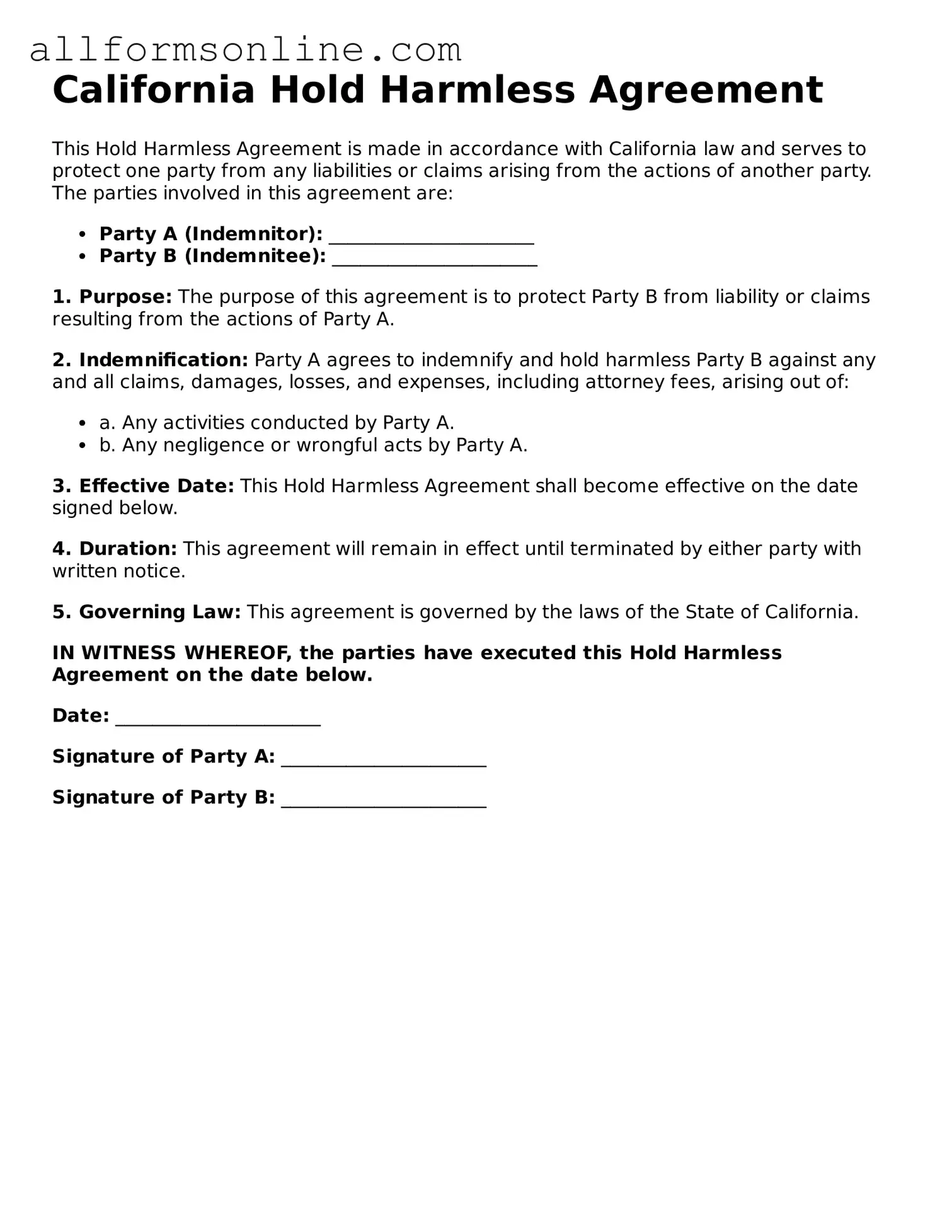What is a California Hold Harmless Agreement?
A Hold Harmless Agreement is a legal document that protects one party from liability for certain actions or events. In California, it often comes into play in contracts where one party agrees not to hold the other responsible for damages or injuries that may occur during a specific activity or event. This agreement is commonly used in construction, events, and rental situations.
Why should I use a Hold Harmless Agreement?
Using a Hold Harmless Agreement can provide peace of mind. It clarifies responsibilities and protects you from potential lawsuits or claims arising from accidents or damages. This is particularly important in high-risk activities or when working with third parties, as it helps to define the scope of liability clearly.
Who typically signs a Hold Harmless Agreement?
Both parties involved in an agreement may sign a Hold Harmless Agreement. For example, a contractor and a property owner might enter into this agreement before starting a project. The contractor may agree not to hold the property owner liable for injuries occurring on the job site, while the property owner may agree to similar terms regarding the contractor's work.
Are Hold Harmless Agreements enforceable in California?
Yes, Hold Harmless Agreements are generally enforceable in California, provided they meet certain legal requirements. The language must be clear, and both parties must willingly agree to the terms. However, courts may not enforce these agreements in cases involving gross negligence or willful misconduct.
What should I include in a Hold Harmless Agreement?
When drafting a Hold Harmless Agreement, include essential elements such as the names of the parties, a description of the activity or event, and specific terms outlining the extent of the liability waiver. It’s also advisable to specify any limitations and ensure both parties understand their rights and responsibilities.
Can I modify a Hold Harmless Agreement?
Yes, Hold Harmless Agreements can be modified as long as both parties agree to the changes. It’s crucial to document any modifications in writing and have both parties sign the updated agreement. This helps maintain clarity and ensures that all parties are on the same page.
What happens if a dispute arises regarding the Hold Harmless Agreement?
If a dispute arises, the parties should first attempt to resolve it through communication. If that fails, mediation or arbitration may be options to consider. If those methods do not work, the matter may need to be resolved in court. Having a well-drafted Hold Harmless Agreement can help clarify expectations and reduce misunderstandings.
